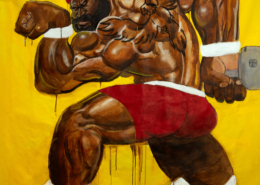 https://nsuartmuseum.org/wp-content/uploads/2015/07/91.40.110.jpg
2294
3030
Fulano
https://nsuartmuseum.org/wp-content/uploads/2021/03/NSU-Logo-2021.png
Fulano2015-09-04 17:46:532015-09-14 18:15:52Bonnie Clearwater on South Florida Arts Beat
https://nsuartmuseum.org/wp-content/uploads/2015/07/91.40.110.jpg
2294
3030
Fulano
https://nsuartmuseum.org/wp-content/uploads/2021/03/NSU-Logo-2021.png
Fulano2015-09-04 17:46:532015-09-14 18:15:52Bonnie Clearwater on South Florida Arts BeatWilliam J. Glackens: A Modernist in the Making
September 4, 2015 – January 14, 2018
William J. Glackens: A Modernist in the Making
This exhibition reveals the importance and depth of NSU Art Museum’s extensive collection of artist William J. Glackens (1870-1938), by presenting works from 1896 to 1936 that distinguish him as one of America’s leading modern artists. His early paintings of contemporary life depict the diversity and everyday activities of people living in late 19th and early 20th century Paris and New York City, and retreating from them at beaches and lake fronts. He was fascinated by the French Impressionists, especially Pierre-Auguste Renoir (1841-1919), and studied them and those of other modern artists on multiple visits to France, starting in 1895.
Glackens was an active proponent of modern art in America and was involved with the organization of three key New York avant-garde exhibitions: “The Eight” (1908), the Armory show (1913) that exhibited American and European modernism together for the first time; and The Society of Independent Artists (1917). He also played a crucial role in the formation of one of the most important collections in America when his childhood friend Albert C. Barnes tapped him to purchase works by European Modern artists for his now celebrated collection.
This exhibition demonstrates Glackens commitment to forging a uniquely American Modernism by including works from his little-known explorations in the 1910s of the abstract compositional components of non-Western art, created alongside Maurice (1858-1924) and Charles (1863-1948) Prendergast, as well as works from the 1920s and 1930s that display his fascination with abstraction and pattern in textiles and decoration.
NSU Art Museum holds the largest collection of Glackens art in the world as a result of gifts from Ira Glackens, son of the artist, and the Sansom Foundation. This exhibition celebrates the return of works loaned to the highly acclaimed 2014-15 retrospective, William J. Glackens, co-organized by NSU Art Museum Fort Lauderdale; the Parrish Art Museum, Water Mill, New York; and The Barnes Foundation, Philadelphia.
The exhibition was curated by Barbara Buhler Lynes, NSU Art Museum’s Sunny Kaufman Senior Curator.
NEW ON VIEW
Nymph Series
From 1914-1917, William Glackens completed more than 40 works of nymphs, a concept that derives from Greek
mythology and the Greek belief that desirable, free-spirited, and provocative minor nature goddesses inhabited the world’s forests, trees, rivers, and streams. Glackens’ nymph series was as dramatic a departure from his well-known and highly celebrated depictions of modern contemporary life as was his turn to Indian art in this same period. He was perhaps inspired to address the nymph theme in response to works of similar subjects by other artist contemporaries, such as Pierre Puvis de Chavannes, Arthur B. Davies, Henri Matisse, and Édouard Manet.
Among the works on display from this series is an oil painting and a watercolor with graphite. 12 of the 16 preparatory sketches for these works from the museum’s collection are also included. In the oil and the watercolor, a mature, nude wood nymph emerges to the left of the composition’s central tree and runs toward a fleeing, clothed child on the right. In the oil painting, the child protectively holds a doll or a small child. Both works imply conquest, danger, exoticism, and a sense of intrigue.
Artists often make numerous preparatory sketches for works in oil or watercolor. The 12 included here range in subject matter from a charcoal drawing of a single nymph in various poses to a number of sketches of the nymph in pastel and charcoal. Other sketches include the nymph on the right side of a composition as well as a depiction of the nymph and clothed child encased in a rectangle on the left. In one of these sketches, Glackens gridded the rectangle perhaps as an aid to positioning the figures. Other sketches focus on the nymph and child and in three of the sketches a third figure emerges either at the center of the composition or on the right, contributing to the mystery of the meaning of these images.
Exhibition









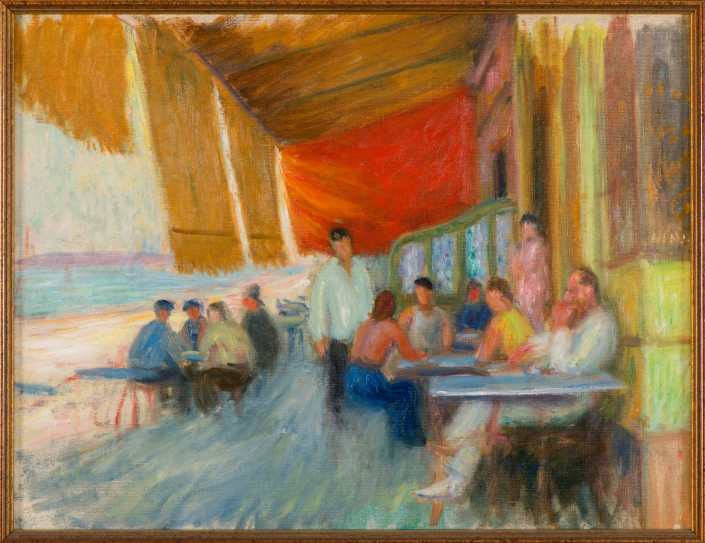




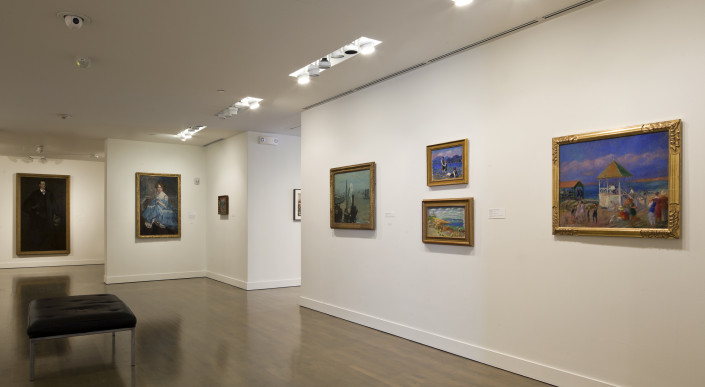


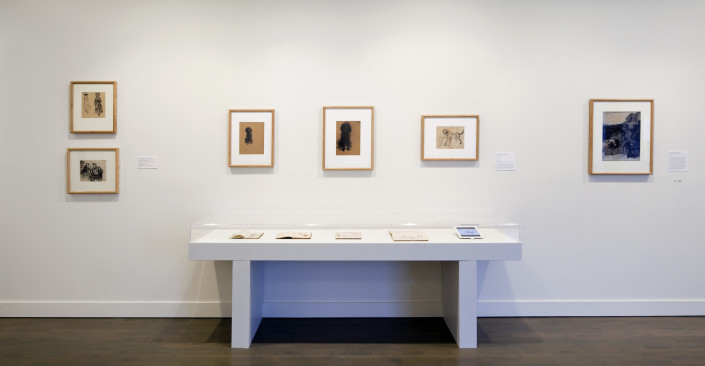

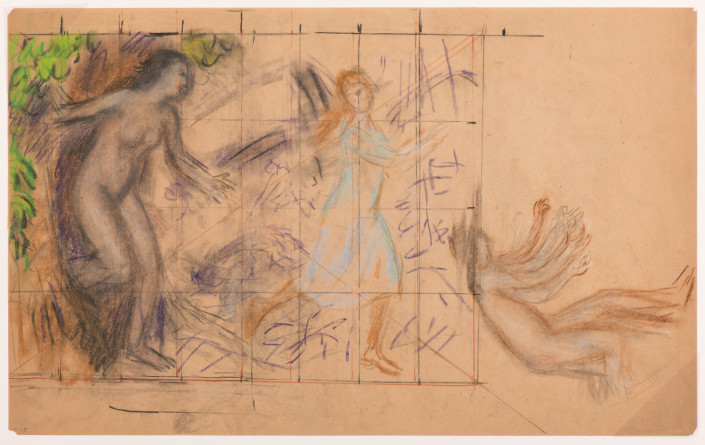





 William J. Glackens Seated Across with Mirror, c.1903. NSU Art Museum Fort Lauderdale; gift of the Sansom Foundation, Inc.
William J. Glackens Seated Across with Mirror, c.1903. NSU Art Museum Fort Lauderdale; gift of the Sansom Foundation, Inc.